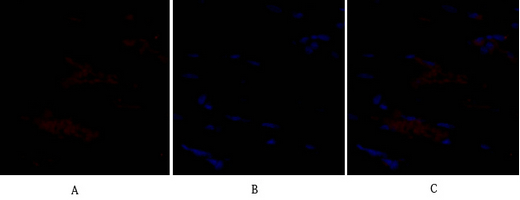SNAI 1 (phospho Ser246) Polyclonal Antibody
- Catalog No.:YP0568
- Applications:WB;IHC;IF;ELISA
- Reactivity:Human;Mouse;Monkey
- Target:
- SNAI1
- Fields:
- >>Adherens junction
- Gene Name:
- SNAI1
- Protein Name:
- Zinc finger protein SNAI1(snail)
- Human Gene Id:
- 6615
- Human Swiss Prot No:
- O95863
- Mouse Gene Id:
- 20613
- Mouse Swiss Prot No:
- Q02085
- Immunogen:
- The antiserum was produced against synthesized peptide derived from human SNAI1 around the phosphorylation site of Ser246. AA range:215-264
- Specificity:
- Phospho-SNAI 1 (S246) Polyclonal Antibody detects endogenous levels of SNAI 1 protein only when phosphorylated at S246.
- Formulation:
- Liquid in PBS containing 50% glycerol, 0.5% BSA and 0.02% sodium azide.
- Source:
- Polyclonal, Rabbit,IgG
- Dilution:
- WB 1:500 - 1:2000. IHC 1:100 - 1:300. IF 1:200 - 1:1000. ELISA: 1:5000. Not yet tested in other applications.
- Purification:
- The antibody was affinity-purified from rabbit antiserum by affinity-chromatography using epitope-specific immunogen.
- Concentration:
- 1 mg/ml
- Storage Stability:
- -15°C to -25°C/1 year(Do not lower than -25°C)
- Other Name:
- SNAI1;SNAH;Zinc finger protein SNAI1;Protein snail homolog 1;Protein sna
- Observed Band(KD):
- 29kD
- Background:
- snail family transcriptional repressor 1(SNAI1) Homo sapiens The Drosophila embryonic protein snail is a zinc finger transcriptional repressor which downregulates the expression of ectodermal genes within the mesoderm. The nuclear protein encoded by this gene is structurally similar to the Drosophila snail protein, and is also thought to be critical for mesoderm formation in the developing embryo. At least two variants of a similar processed pseudogene have been found on chromosome 2. [provided by RefSeq, Jul 2008],
- Function:
- function:Seems to be involved in embryonic mesoderm formation. Binds to 3 E-boxes of the E-cadherin gene promoter and represses its transcription.,similarity:Belongs to the snail C2H2-type zinc-finger protein family.,similarity:Contains 4 C2H2-type zinc fingers.,tissue specificity:Expressed in a variety of tissues with the highest expression in kidney.,
- Subcellular Location:
- Nucleus . Cytoplasm . Once phosphorylated (probably on Ser-107, Ser-111, Ser-115 and Ser-119) it is exported from the nucleus to the cytoplasm where subsequent phosphorylation of the destruction motif and ubiquitination involving BTRC occurs. .
- Expression:
- Expressed in a variety of tissues with the highest expression in kidney. Expressed in mesenchymal and epithelial cell lines.
- June 19-2018
- WESTERN IMMUNOBLOTTING PROTOCOL
- June 19-2018
- IMMUNOHISTOCHEMISTRY-PARAFFIN PROTOCOL
- June 19-2018
- IMMUNOFLUORESCENCE PROTOCOL
- September 08-2020
- FLOW-CYTOMEYRT-PROTOCOL
- May 20-2022
- Cell-Based ELISA│解您多样本WB检测之困扰
- July 13-2018
- CELL-BASED-ELISA-PROTOCOL-FOR-ACETYL-PROTEIN
- July 13-2018
- CELL-BASED-ELISA-PROTOCOL-FOR-PHOSPHO-PROTEIN
- July 13-2018
- Antibody-FAQs
- Products Images
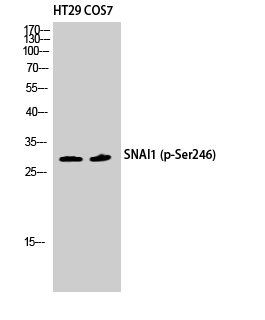
- Western Blot analysis of HT29 COS7 cells using Phospho-SNAI 1 (S246) Polyclonal Antibody diluted at 1:500 cells nucleus extracted by Minute TM Cytoplasmic and Nuclear Fractionation kit (SC-003,Inventbiotech,MN,USA).
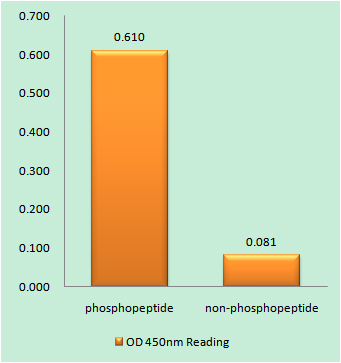
- Enzyme-Linked Immunosorbent Assay (Phospho-ELISA) for Immunogen Phosphopeptide (Phospho-left) and Non-Phosphopeptide (Phospho-right), using SNAI1 (Phospho-Ser246) Antibody
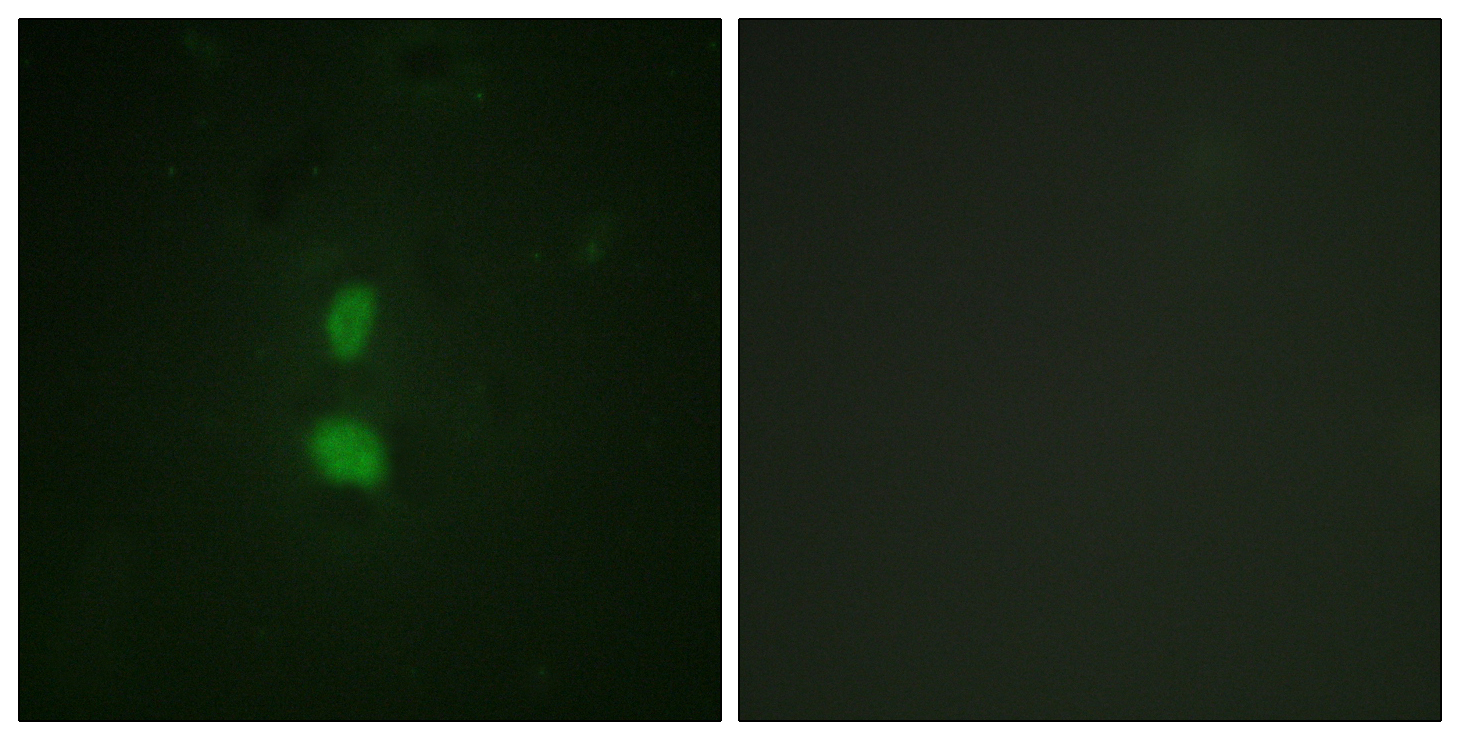
- Immunofluorescence analysis of HUVEC cells, using SNAI1 (Phospho-Ser246) Antibody. The picture on the right is blocked with the phospho peptide.
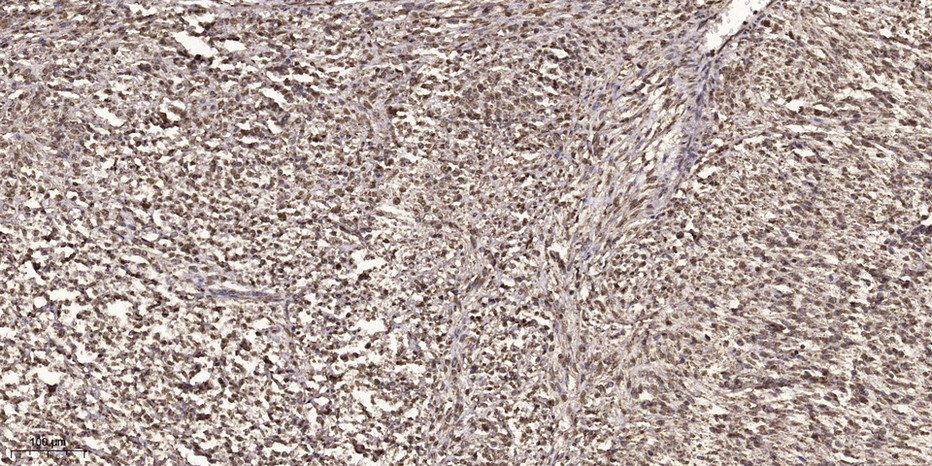
- Immunohistochemical analysis of paraffin-embedded human small intestinal carcinoma tissue. 1,primary Antibody was diluted at 1:200(4° overnight). 2, Sodium citrate pH 6.0 was used for antigen retrieval(>98°C,20min). 3,Secondary antibody was diluted at 1:200
